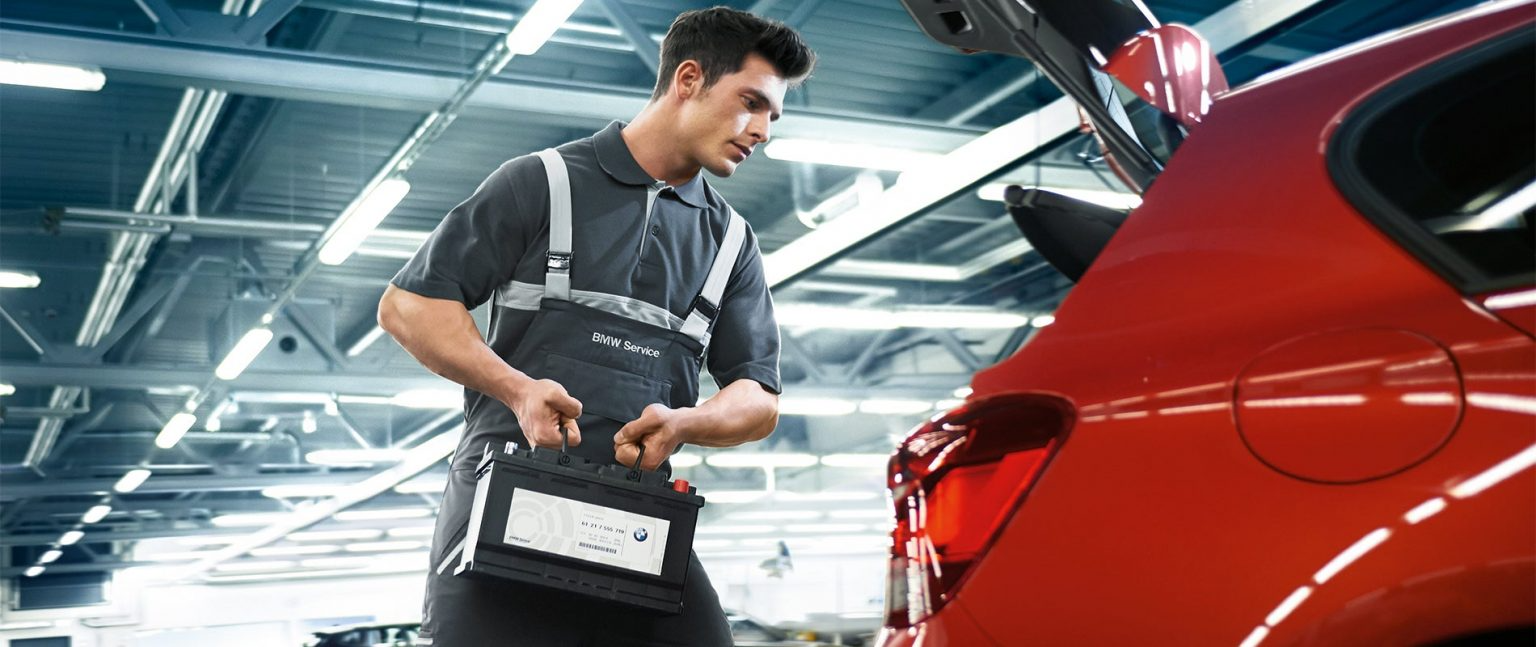
Maintaining your vehicle’s battery is one of the most important aspects when it comes to ongoing checks and balances. There are key ways to both preserve your battery’s health as well as maximize its performance over time. Batteries are an essential part of an automobile and should be treated as such. They are the key to keep your car running right, no matter the weather conditions.
Their average life…
A car battery lasts, on average, two to five years, but that can differ in warmer climates. In fact, what affects that longevity the most is weather. It is important to note that a running engine under the hood is constantly producing high levels of heat. Add to that a scorching hot day and there is a severe drain on your car’s battery. This, in turn, can result in a dead battery if the proper precautions are not considered.
Because warm weather can cause fluid in car batteries to evaporate, thus damaging the internal structure, it is important to consider the climate in which you live and do the most driving.
But, regardless of that climate, it is vital to properly take are of your battery to keep it running.
Tips to longevity….
Limit those short rides!
It is known that quick car rides prevent a car’s battery from fully charging. Therefore it is important to maintain your car’s battery power by driving it frequently and for extended periods. If you are unable to do that or do not use your car very often, it may be wise to invest in a portable battery charger which can jump start your battery without another vehicle if need be.
Fasten tightly!
Make sure that your battery is tightly fastened, and therefore not vibrating, thus causing internal damage. Take the time to have your battery terminal checked frequently to ensure it is tightly and properly positioned in the mounting bracket.
Lights off!!
Each and every time you exit the vehicle, turn the lights off! That is because keeping them on can place a very heavy toll on your battery. If need be, tack a reminder inside your vehicle to do so. If you have an “Auto” setting, no need to worry as your car will make sure the lights are on or off when they are supposed to be.
Corrosion be gone!
Because battery terminals corrode over time, it is important to keep them clean from buildup. You can do so by scrubbing the terminals with a toothbrush dipped in a baking soda and water mixture. From there, use a spray bottle with cold water to rinse the mixture off thoroughly then end this process with a thorough drying using a clean cloth. Make sure your battery is disconnected when cleaning the terminals!!
Test, test, test!
It is important to frequently test your battery, therefore knowing its condition to increase its life. Invest in a car battery test to keep track.

Keep electronics off while idling!
When your engine isn’t running, then your electronics should not be either! This puts a great wear and tear on your battery power due to the fact that extended periods of idling can wear your battery down.
Whole car approach
While the battery is just one component of your vehicle, it is important to care for the whole car, including regular tune ups as well as proper storage of your vehicle. That will help ensure the longevity of your battery’s life.
Other helpful tips:
Drive often — a battery that sits for a long time can eventually drain to the point where there is not enough energy left to bolster the engine. To combat this, drive your vehicle once a week for at least 30 minutes and preferably at highway speeds to give the battery that much-needed boost!
Install an insulation blanket
This comes in the form of a plastic sheet that keeps the battery warm, an especially helpful trick in the colder months.
Bad signs:
There are several warning signs that mean you are at risk for a breakdown. It is important to be cognizant of these!
For one, if you hear grinding or a clicking sound when you turn the ignition, then this is a sign of a bad battery. Another involves whether or not your vehicle cranks slowly when you are attempting to start it. Do your headlights dim when idling but brighten when revving your engine? That, too, is a bad sign! Lastly, if your battery is more than 3 years old, it’s time to consider a replacement.
Helpful do-it-yourself tools
If you are more of a do-it-yourselfer, then there are definitely tools that you must have at your disposal. A set of wrenches always comes in handy, as well as a post cleaner or side terminal, a hydrometer and a cable puller.
You can begin your self-check by first cleaning the top of the battery and any corrosion from the cables. Then disconnect the cables, beginning with the negative one to prevent your wrenches from arcing on a nearby ground. Next, loosen the battery cable clamp bolts and gently give them a twist. Use a cable puller if they are stuck as you should never pry on battery posts.
Once you pry off the covers of the battery cells, check the water and acid mixture within. It should be about 1/2 inch deep or to the bottom of the fill hole. If you need to add water, use clean distilled water. A check for cracks should be the next step. If one is found, replace the battery.
The condition and charge of the battery is your next to do. Test the electrolyte in each cell with a hydrometer, squeezing the ball on the hydrometer and drawing the solution into the tester. Be careful to hold the tester level and write down the reading. The testers are calibrated assuming a battery is at 80 degrees F. Add .04 for every 10 degrees below. A battery needs replaced if you get a cell reading that differs from the others by .05 or more. A fully charged battery should have a reading of 1.265 or higher.
To replace a battery, caution is needed, beginning with the need for eye wear. Then, use a heavy-duty strap to carefully lift out the old battery. It is important to be cognizant of the fact that battery acid is dangerous so the battery should not be dropped. Once it is out, clean the battery tray and replace it.
Once the new battery is carefully put into place, the hold-down clamp should be connected and then the cable will also be connected to the positive terminal first and the negative last. Smear a bit of petroleum jelly onto the terminal before battening the cable clamps to the post.
Overall, through a watchful eye and attention to helpful tips that maintain a long battery life, you will avoid the expense of a tow or service. Seasonal battery check ups do not take long, so consider the investment in your time and energy for greater benefit in the long run. Being stranded with a dead battery is a scenario everyone wants to avoid. Care for one of your vehicle’s most important components, and lead the charge!